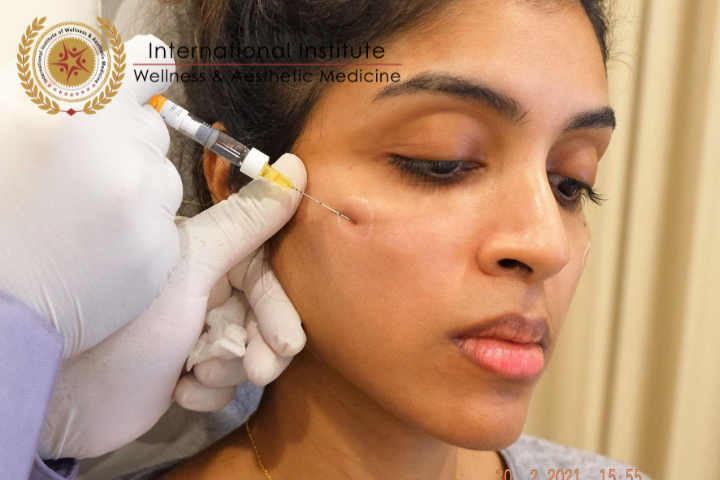Open Rhinoplasty Vs Closed Rhinoplasty
In a recent article, we elaborated upon the various cosmetic procedures for overall nose augmentation (Read our article on Nose Augmentation Procedures).
In today’s article, we will help to educate you further about the difference between open rhinoplasty and closed rhinoplasty.
About rhinoplasty
The nose is one of the most important features on the human face. Nose augmentation, also known as rhinoplasty, is a cosmetic procedure that helps reconstruct and improve the nose's overall appearance. The main aim of nose augmentation or rhinoplasty is to shape a misshapen nose for a better aesthetic appeal. The nose augmentation procedure involves changing the angulation of the nose, altering indentations, reshaping the tip, or correcting bumps.
Open rhinoplasty
Open rhinoplasty can be considered a favorable rhinoplasty surgery for patients who need extensive work done to the nose. The aesthetic surgeon will make incisions on the skin between your nostrils and the columella. Next, the skin is lifted to reveal the inside of the nasal cavity, giving the rhinoplasty surgeon access to perform the necessary reshaping. After the surgery is complete, the columella is sutured, and the nose is secured in place with tape and a splint. The splint keeps the nose in place during the healing process and is typically removed after one week. Open rhinoplasty is excellent for patients with genetic or structural deformities, trauma to the nose requiring grafting, and unsatisfactory results from a previous nose rhinoplasty.
Closed rhinoplasty
Closed rhinoplasty is the most common type of nose rhinoplasty the patients choose. This rhinoplasty leaves no external scars as the incisions aren’t made across the columella but is carried out through the mucosa on the inside of the nose.
Areas targeted during rhinoplasty
According to expert aesthetic practitioners, nose rhinoplasty can help with the following concerns-
-
It is not the right size or proportion for their face (either a nose that is too large or too small)
-
A bump on the bridge of the nose
-
When the nose seems too wide for their face
-
Has an issue with the tip of the nose, including a bulbous, protruding, drooping, or over-sized nasal tip
-
Has nostrils that are either flared or pinched
-
Is crooked or asymmetrical
Open rhinoplasty Vs closed rhinoplasty
Open rhinoplasty and closed rhinoplasty varies in terms of -
Treatment time
Without the columellar incision, the closed technique allows shorter treatment time and downtime during the recovery period. On the other hand, an open rhinoplasty requires more treatment time and overall downtime when altering the nasal structures for more complex cases.
Swelling after the cosmetic procedure
Patients reported having less swelling in closed rhinoplasty treatment procedures than in open rhinoplasty.
Visibility of scar
Since all the incisions are done inside the nose during closed rhinoplasty treatment procedures, there are no external scars compared to open rhinoplasty.
Ability to sculpt the nose
An open rhinoplasty gives the Aesthetic medical practitioner the ability to see any asymmetry or abnormalities that were not clear from an external examination allowing the Aesthetic medical practitioner to be much more precise, given that the nose is such a prominent feature of the human face and such a delicate structure, the more precision in rhinoplasty, the better.
A closed rhinoplasty may be a good choice for some patients who need minimal work done.
Choosing the correct type of rhinoplasty cosmetic procedure depends on an individual patient's requirements and the desired outcome of the surgery.
About IIWAM training in rhinoplasty
It is prudent that all Aesthetic practitioners undergo proper training in Aesthetic Medicine. The practitioner must balance between benefits & risks of the Aesthetic procedure and steps to mitigate complications if it occurs. At IIWAM, we call it understanding the procedure, the product, and the patient, and our trainers pay utmost attention to teaching the following subjects of rhinoplasty under our best Cosmetic Dermatology Online Courses .
-
What are the principles of rhinoplasty?
-
What are the principles of open rhinoplasty?
-
What are the principles of closed rhinoplasty?
-
What are open rhinoplasty-related complications?
-
What are closed rhinoplasty-related complications?
-
How to avoid open rhinoplasty-related complications?
-
How to avoid closed rhinoplasty-related complications?
-
How to treat open rhinoplasty-related complications?
-
How to treat closed rhinoplasty-related complications?
Apply for the best online aesthetic courses from IIWAM today.
About IIWAM
International Institute of Wellness & Aesthetic Medicine (https://www.iiwam.ac/education) is a private teaching institution that provides International Aesthetic Medical Certification programs for Doctors, Dentists, Nurses, Aestheticians, and Spa Owners. Prof Dr Morthy, the course director for the Institute, is a key opinion leader for Aesthetic Medicine in the region, and a trainer for several teaching institutions.
The International Institute of Wellness & Aesthetic Medicine (IIWAM) has academic affiliations with several countries, including Malaysia, Korea, Thailand, Philippines, Myanmar, Cambodia, India and Indonesia. With our insignia of “Be Certified & Be Recognized”, the Institute develops knowledgeable, skilled, and confident aesthetic practitioners of international repute.
IIWAM is the only Institute to have its Programs certified by City & Guilds of London, CPD Standards Office (UK) and European International University (Paris). IIWAM is also a registered CPD Training provider for Malaysian Medical Association.
IIWAM also offers Cosmetic Procedures and Stem Cell treatment at IIWAM Wellness Centre (https://www.iiwam.ac/wellness) that are safe, effective, and affordable.

